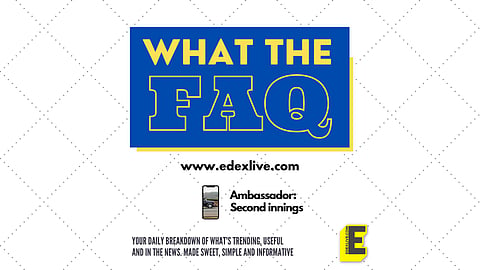

Om Shanti Om (2007), Bhoothnath (2008), Once Upon a Time in Mumbaai (2010), Dabangg 2 (2012) — all these movies in the 21st century have one thing in common and it's a car! Wondering which one? Featured in films and used by Indian government officials as a status symbol, the Indian Ambassador is an icon. But despite its rich legacy, it was discontinued a few years ago. But it looks like this icon isn't done yet because news is that the Ambassador is coming back with a facelift! Let’s look at the details in today’s #WhatTheFAQ.
Is the Ambassador really coming back?
Yes, it is, according to an official announcement by the Hindustan Motor Financial Corporation of India (HMFCI). HMFCI had taken over the Chennai manufacturing plant of Hindustan Motors Limited (HM), the original manufacturer of the Hindustan Ambassador, which was once a flagship company of the CK Birla Group. It was declared recently by the company that they will be re-launching the iconic Ambassador in a revamped model in the Indian market.
The company had, earlier in 2017, sold the rights to the Ambassador brand to Peugeot, a French automobile manufacturer. The new model to be launched will be a collaboration of HMFCI and its French partner. It has been reported by Reuters that the collaboration will be in a 51:49 ratio, where the controlling stake will be with Hindustan Motors. The revamped model will likely be launched in two years, in 2024.
What will the new car be like?
The Ambassador 2.0 will be electric! Though the design of the car is yet to be finalised, a spacious interior, a modern dashboard, upholstery and a tech-based cabin with climate control features are likely in it. The car also may have a retro-modern look and sloping roofline, as mentioned in a description by the website BGR.in.
So, HMFCI and Ambassador are both to be revived by venturing into the Indian Electronic Vehicle (EV) segment. It has been announced that the car will be manufactured by the company’s Chennai plant, run by HMFCI.
What are people saying about the re-launch?
It is nostalgia working its magic for most people who are happy about the Ambassador coming back. Many, however, think that the re-launch is not a very good idea. They have opined that though re-launching it as an electric vehicle will create a buzz in the EV market, there will be “teething issues” for the Ambassador.
There will be a pricing challenge as well, and the manufacturer has to balance it between the nostalgia factor and new-age technology codes. Also, because the attempted remodelling of the car had failed several times in the past, leading to the Ambassador being discontinued, there are doubts if the current model would survive in the highly competitive Indian market.
Why was the Ambassador discontinued?
Hindustan Motors has cited “worsening conditions at its Uttarpara plant which include very low productivity, growing indiscipline, critical shortage of funds, lack of demand for its core product, the Ambassador, and large accumulation of liabilities” as the reasons in a report by Swarajya Magazine. The car ran productions from 1958 to 2014. However, the sales were not smooth. The fuel economy of the Ambassador was low and users experienced various functioning problems as well. This led to declining demands. When the BS-IV emission norms were rolled out in 2011 in India, the Ambassador was banned. However, the last, 7th-generation Ambassador was called the Encore and it complied with the BS-IV engine standards. But production was stopped soon after.
Why does the car have such a rich legacy?
The Ambassador was based on the Morris Oxford series III car model, which Morris Motors Limited manufactured from 1956 to 1959 at Oxford, UK. Though having British origins, the car was made in India. It was a status symbol in the 60s and 70s and it dominated the Indian roads. This was the longest running car in the Indian markets, spanning almost 55 years. And it was the first diesel car of India and was known as the "King of Indian Roads" for its sturdy build and comfortable ride. The Ambassadors were widely used not only by the Indian government, which purchased 16% of the car’s total sales, but also were very much popular as taxis. It was selected as the world's best taxi by global automotive programme Top Gear in 2013.
